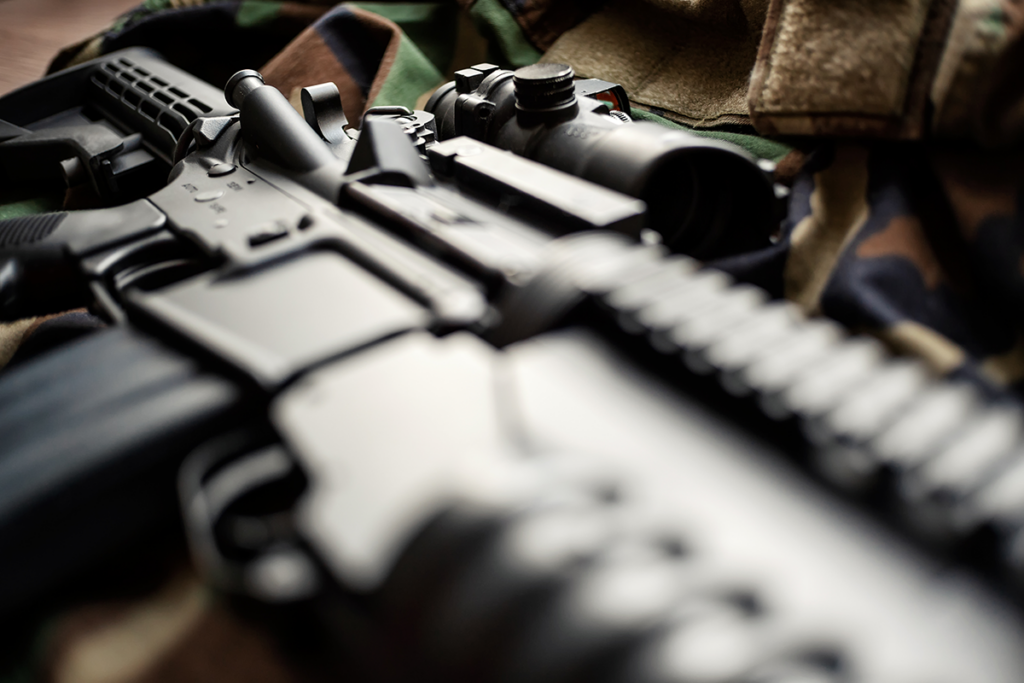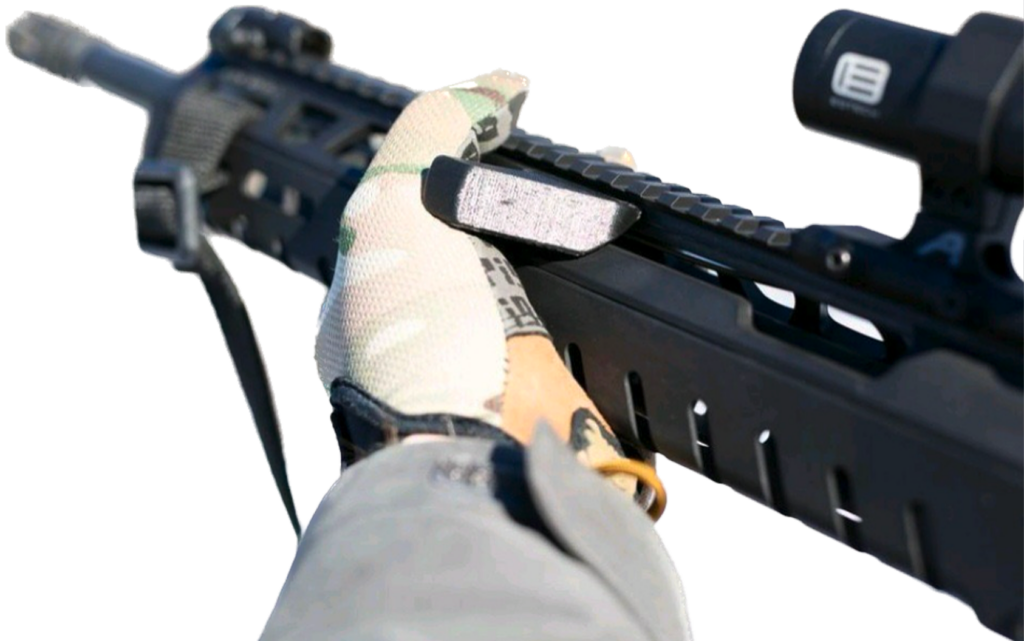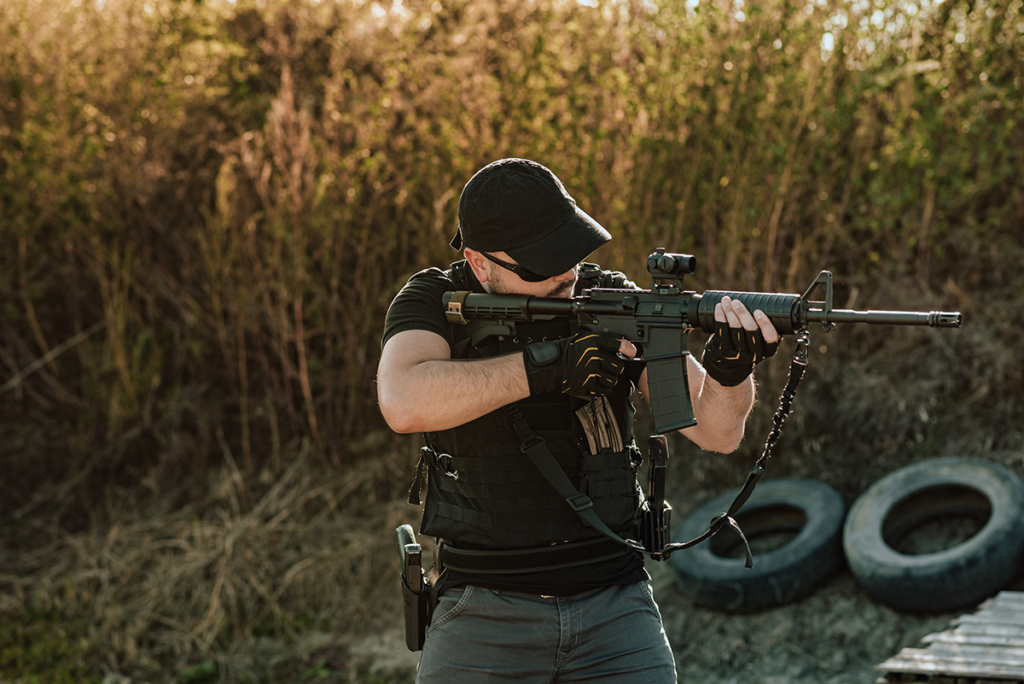As far as firearm customization goes, the AR-15 has seen just about every kind of mod under the sun. One change that’s caught attention—and some skepticism—is the side charging handle.
Moving the charging handle from its standard rear position to a lateral (side) location may look unconventional, but don’t knock it until you understand what it’s doing differently. In fact, side charging (and its cousin, forward charging) actually offer some practical benefits worth paying attention to.
I’m not saying everyone needs to ditch the tried-and-true rear charging handle—there’s a reason it’s stuck around for decades and why most conventional military and police setups still use it. But if you’re serious about dialing in your rifle to fit the way you shoot, it’s worth understanding what these alternative systems bring to the table. There’s some genuinely good engineering here that can make your shooting experience faster, more intuitive, and just plain easier on your optics setup.
Today we’re going to break down the ins and outs of each charging style—rear, forward, and side charging—so you can see how they stack up, when they shine, and why each has its fans. Maybe you’re an optics guy, maybe you’re shooting competitively, or maybe you just believe in making things as efficient as possible because, well, it’s your damn rifle.

So if you want to maximize ergonomics, find out which setup works best with your optics—or are just looking to fully trick out your AR and are wondering if one of these setups could change your shooting experience—we’ve got it covered here.
Before we jump into the details, though, let’s get on the same page with a few key terms.
Terminology
Before we get into the specifics of each charging system, let’s get a few basics down. You’ll see these terms popping up throughout the article, and knowing exactly what they mean upfront will make it a whole lot easier to follow along—so it’s worth taking a minute to get familiar with the lingo if you aren’t already.
Once we’ve got the groundwork laid, we’ll dive right into what each charging style has to offer and how they measure up in different shooting scenarios.
AR-15 Upper
The upper receiver is the top half of the AR-15’s main assembly. It houses the barrel, bolt carrier group (BCG), charging handle, and other essential components. The upper receiver attaches to the lower receiver, which houses the trigger and magazine well, making up the full rifle.
Uppers come in different configurations and are interchangeable on most AR-15 platforms, allowing users to swap calibers or functions by changing out just the upper receiver.
Charging Handle
The charging handle is a key component used to manually operate the rifle’s bolt. Located at the rear in traditional AR-15 setups, the charging handle is pulled back to chamber a round, clear a malfunction, or lock the bolt open.
Bolt Carrier Group (BCG)
The bolt carrier group is the internal assembly responsible for cycling rounds in the AR-15. When the rifle is fired, gas pressure forces the BCG backward, ejecting the spent round and chambering a new one. The BCG consists of multiple parts, including the bolt, firing pin, and extractor. In side-charging systems, the BCG may have a slight modification to accept the side-mounted charging handle.
Malfunction Clearance
Malfunction clearance refers to the process of fixing a problem that prevents the rifle from firing correctly. Common malfunctions include jams, misfires, or double-feeds. The charging handle allows the shooter to eject problematic rounds or clear obstructions by racking the bolt.

Comparing AR-15 Charging Systems
Below is a quick-reference chart that outlines the key features, benefits, and potential drawbacks of each AR-15 charging system: rear, side, and forward. Think of this as just a high-level overview, designed to give you a snapshot of which system might suit your needs best. After that, we’ll dive deeper into each system, breaking down how each charging style functions, where it shines, and the practical considerations you need to keep in mind.
| Charging System | Position | Reciprocation | Advantages | Disadvantages | Best For |
|---|---|---|---|---|---|
| Rear Charging | Rear of upper receiver | Non-reciprocating | – Standard, familiar AR-15 setup – Ambidextrous – Minimal weight or balance impact | – Requires reach-back motion, which can slow down reloads – Challenging to operate one-handed in defensive/tactical scenarios – Can obstruct large optics – Breaks shooting stance | – Casual shooting – Basic builds or minimalist setups – Conventional law enforcement or military use |
| Side Charging | Side of upper receiver | Mostly non-reciprocating | – Faster access, more intuitive for reloads and malfunction clearing – Better optics compatibility – Reduced snagging risk – Improved target reacquisition after reload/malfunction | – Adds slight weight to the side of receiver, though the amount is usually unnoticeable | – Competitive shooters – Optics-heavy builds – Tactical setups – Users who prioritize quick access and easy manipulation |
| Forward Charging | Front of upper receiver, near barrel | Usually reciprocating (bolt-connected) | – Direct bolt control for tough conditions – Closer to the fore-end for quicker access – Maintains traditional sight alignment – Visual indicator of bolt position | – Slight snag risk on gear, especially when moving – Limited compatibility with standard AR-15 parts – Minor increased reciprocation wear | – Tactical or rugged use – Shooters who prefer hands-on bolt control – Those familiar with AK-style platforms or piston-driven AR systems |
Now that you’ve got the basics from the chart, let’s dig a little deeper into what each charging system actually brings to the table. Below, we’re going to break down rear, side, and forward charging systems one by one, covering what makes each setup tick, why certain shooters swear by one over the others, and where each one really shines—or falls short. You’ll see how each style fits different shooting needs, and by the end of this, you should have a pretty clear idea of which one lines up best with what you want out of your rifle.

Traditional Rear-Mounted Charging Handle: How It Works & Its Limitations
The original AR-15 charging system is rear-mounted, with the charging handle positioned directly behind the bolt carrier group (BCG), sticking out from the back of the upper receiver, right above the stock and between the shooter’s shoulders. To operate it, you reach over or around the top of the rifle, pulling it directly back.
This rear-mounted design works for the original intended use—two-handed operation with a stable shooting stance. You can “tap-rack-bang” by pulling the rear handle to cycle the bolt and clear obstructions. But it has a few limitations:
- Awkward Access with Optics: Many modern AR-15 setups include larger optics (scopes, red dots, or ACOGs) that can sit right above the charging handle. In a traditional setup, this can require you to break your cheek weld (head position on the stock) to reach it or move your head out of alignment with the sights. It’s manageable, but not ideal, especially when aiming under pressure.
- Stance Disruption: Because the charging handle is behind the main firing grip, you usually need to remove your support hand (the hand on the fore-end) to reach back and operate it. This might sound minor at first, but for competitive shooters or in tactical situations, every second spent readjusting the stance can matter.
Rear charging systems are used by those who prefer the standard AR setup, particularly in standard carbine and rifle builds. It’s often the choice for entry-level shooters as well as military and law enforcement personnel familiar with the M16/M4 platform.
Side Charging System
The AR-15’s original design features a rear-mounted charging handle, which has its strengths in a traditional two-handed grip setup. But the side charge system shifts the charging handle to the side of the rifle, allowing for quicker access without taking your support hand too far out of position.
This change can lead to real improvements in certain situations, and especially for shooters who prefer quick, single-handed charging or run optics that interfere with traditional charging handles.
- Faster, More Intuitive Charging: With the charging handle on the side, it’s easier to access in a natural shooting stance. You don’t need to reach to the back of the receiver, making reloads and charging quicker and less awkward. This setup can be especially helpful for competitive shooters or anyone using their rifle in fast-paced situations.
- Improved Malfunction Clearance: Malfunctions happen, and clearing them efficiently is critical. A side charging handle allows you to stay in a stable position while racking the bolt to clear jams or misfeeds. This lateral handle makes it easier to access with your support hand and can be particularly helpful under pressure.
- Optics Compatibility: One of the more practical benefits is compatibility with larger or more complex optics setups. High-mounted scopes or large red dot systems can obstruct a rear charging handle. With a side charger, you can access the handle without interfering with your optics, so you don’t have to break sight alignment while manipulating the bolt.
- Reduced Snagging: In tight quarters or high-movement situations, there’s less chance of snagging on gear or clothing. A side charging handle generally sits more out of the way, giving you smoother operation without worrying about pulling on extra kit.
Popular Use Cases: Side charging is popular for shooters looking for faster reloads and easier optics integration. It’s common among competitive shooters, hunters, and those customizing AR-15s for specific tactical or personal defense applications.
Forward Charging System
In a forward charging setup, the charging handle is located at the front of the upper receiver, close to the barrel. This system is less common on AR-15s but has gained traction among certain manufacturers and shooters due to its benefits. Forward charging designs vary, but here’s a typical setup and its advantages:
- Closer to the Barrel: Forward charging handles are often positioned in the front-left section of the receiver. Some forward chargers use a fixed handle attached directly to the bolt carrier, making it a reciprocating handle—it moves back and forth with each shot. This design gives you a visual indicator of the bolt’s position and lets you work the handle directly as part of the action.
- Simplifies Malfunction Clearance: The forward handle’s position can simplify certain malfunction drills by providing easy access without disrupting your grip. It’s particularly useful in setups where quick handling is necessary, as your support hand can remain closer to the fore-end.
- Direct Control Over the Bolt: In some forward-charging systems, especially reciprocating models, the charging handle is directly connected to the bolt carrier. This can provide an added level of control in jammed or rough conditions, as you’re physically moving the bolt and not relying solely on springs.
Popular Use Cases: Forward charging setups are sometimes preferred by shooters who want hands-on control over the bolt. They’re common on non-AR platforms like the AK-47, SCAR, and certain piston-driven AR-15s. Some tactical users prefer forward charging for the increased bolt manipulation control, and others use it to keep both hands closer to the center of the rifle.
Which System is Right for You?

Side charging and forward charging setups aren’t essential for everyone, but they do provide real advantages for certain shooting styles. For example, if you regularly run larger optics, want quicker access to the charging handle, or are interested in a more streamlined way to clear malfunctions, a side charge AR-15 could be a practical upgrade.
- If You Prefer Faster Reloads and Optics Compatibility: Side charging offers ergonomic access, fewer obstructions, and easier use with scopes or red dots. It’s also generally less invasive, keeping the receiver’s centerline clear and leaving the optics area free.
- If You Want Direct Bolt Control and Don’t Mind a Reciprocating Handle: Forward charging is a better choice if you want to feel the bolt’s movement or work directly with the BCG. It’s common in rough-use rifles and may feel more robust if you’re familiar with platforms like the AK-47 or SCAR.
Final Thoughts
So, we’ve covered the rear charging handle—the tried-and-true classic that’s kept the AR-15 platform so reliable for decades. Then we’ve got side charging, which lets you stay on target and keep your optics in line. And finally, forward charging, bringing a little AK-47 flavor to the AR-15 world with hands-on bolt control.

If we’re talking pure tradition, the rear charging setup is about as classic as it gets. But like any classic that was come up with many years ago, it’s got some quirks compared to what’s available today—namely, the reach-back maneuver that can slow you down if you’re running optics or working under pressure. For those who aren’t customizing every aspect of their build, sticking with a rear-charger might feel natural.
However—if you’re the kind of shooter who loves the idea of never breaking sight alignment and shaving off seconds in high-paced shooting scenarios, side charging probably caught your interest. It feels intuitive, gives you easy access, and really shines if you’re running larger scopes or red dots. The non-reciprocating handle keeps things smooth and snag-free, so it’s great for competitive shooters and anyone else who appreciates a streamlined setup. Side charging is an upgrade that modernizes your AR without completely changing the experience.
Forward charging is definitely worth considering if you want direct, hands-on control over the bolt. This style appeals to shooters familiar with reciprocating systems who like knowing exactly where that bolt is at all times. For rugged conditions or tough training environments, having that “touch and feel” connection with the bolt can be reassuring. It may not be for everyone, but forward charging brings a sense of control that’s just hard to replicate.
Ultimately, the right choice comes down to what you value most in your setup. Side charging is a real leap in terms of ease of access, especially if you’re running optics or just prefer a faster, more ergonomic solution. And forward charging brings a raw, direct approach to bolt manipulation that can feel just right for certain tactical or rough-use builds.
So, is one “better” than the others? Well yes, but only in the context of how you like to shoot. Each system offers an edge in the right hands, and each has earned its spot for a reason.

